Products
Products
-

Organic fertilizer
Agricultural use: 1. There are a large number of beneficial microorganisms in the bio-organic fertilizer, which can decompose the organic matter in the soil, increase the soil aggregate structure, and improve the soil composition. Microorganisms multiply very fast in the soil. They are like a big invisible net, intricately intricate. After the death of the microbial cells, many tiny pipes are left in the soil. These tiny pipes not only increase the air permeability of the soil, but also make ... -
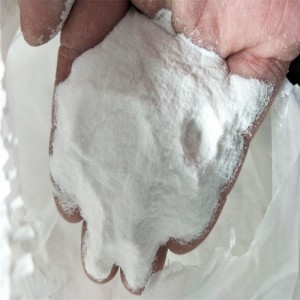
Little Suda
Agricultural use: Different from industrial soda ash (sodium carbonate) and baking soda (sodium bicarbonate), baking soda is made from a solution or crystal of soda ash after absorbing carbon dioxide. Therefore, baking soda is also called edible alkali (powdered) in some places. Baking soda is solid, round, white in color, and easily soluble in water. White fine crystals, the solubility in water is less than that of sodium carbonate. It is also an industrial chemical. The solid starts to deco... -
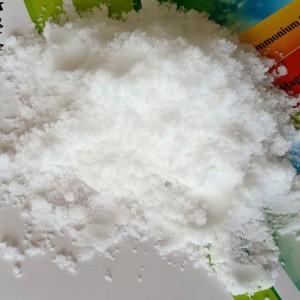
Ammonium bicarbonate
Ammonium bicarbonate effect 1. Used as a nitrogen fertilizer, suitable for various soils, and can provide both ammonium nitrogen and carbon dioxide required for crop growth, but the nitrogen content is low and it is easy to agglomerate; 2. Used as an analytical reagent, also used in the synthesis of ammonium salts and fabric degreasing; 3. Used as chemical fertilizer; 4. It can promote crop growth and photosynthesis, promote seedlings to grow leaves, can be used as top dressing, or as base fe... -
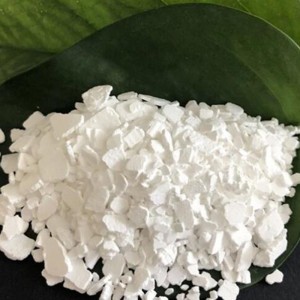
Calcium chloride
Agricultural use: Calcium chloride, a salt composed of chlorine and calcium, has the chemical formula CaCl2. Slightly bitter and tasteless. It is a typical ionic halide, white, hard pieces or particles at room temperature. Its common applications include brine used in refrigeration equipment, road ice melting agents and desiccants. Because it easily absorbs moisture in the air and deliquesces [5], anhydrous calcium chloride must be sealed and stored in a container. Desiccant Calcium chloride ... -
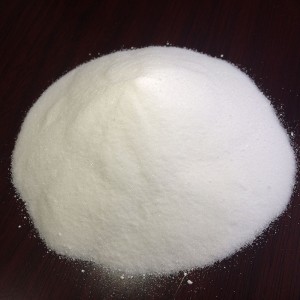
Sodium sulphate
Agricultural use: Sodium sulfate is used to make sodium sulfide, paper pulp, glass, water glass, enamel, and also used as a laxative and antidote for barium salt poisoning. It is a by-product of the production of hydrochloric acid from table salt and sulfuric acid. Chemically used to make sodium sulfide, sodium silicate, etc. The laboratory is used to wash away the barium salt. The role and use of sodium sulfate 1. Used in the chemical industry to manufacture sodium sulfide sodium silicate wa... -

Sodium acetate
Agricultural use: Sodium acetate, also called sodium acetate, is a sodium salt derived from acetic acid. Sodium acetate is a substance that is easily made with vinegar and baking soda. When the mixture cools below its melting point, it will crystallize. Crystallization is an exothermic process, so these crystals actually generate heat, which is why the substance is often called hot ice. This compound has many industrial and daily uses、 The main purpose In the food industry, sodium acetate is... -

oxalic acid
Agricultural use: Oxalic acid is white crystals, much like sugar. Before washing, dissolve one part of oxalic acid in 20 parts of water to make an oxalic acid solution. Then, drop it on the rust spots of the clothes, after scrubbing and rinsing, the rust is gone. Oxalic acid can remove rust because of its strong reducing ability. The iron in the rust spots is trivalent iron, which is not soluble in water. When it touches oxalic acid, it is reduced to divalent iron and can be dissolved in wate... -
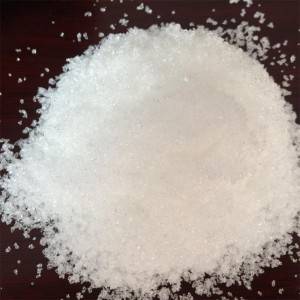
UREA PHOSPHATE
Urea phosphate, also known as urea phosphate or urea phosphate, is a ruminant feed additive that is superior to urea and can provide non-protein nitrogen and phosphorus at the same time. It is an organic matter with the chemical formula CO(NH2)2·H3PO4. It is easily soluble in water, and the aqueous solution becomes acidic; it is insoluble in ethers, toluene and carbon tetrachloride. -

SINGLE SUPER PHOSPHATE
Superphosphate is also called general calcium phosphate, or general calcium for short. It is the first kind of phosphate fertilizer produced in the world, and it is also a kind of phosphate fertilizer widely used in our country. The effective phosphorus content of superphosphate varies greatly, generally between 12% and 21%. Pure superphosphate is dark gray or off-white powder, slightly sour, easy to absorb moisture, easy to agglomerate, and corrosive. After being dissolved in water (the insoluble part is gypsum, accounting for about 40% to 50%), it becomes acidic quick-acting phosphate fertilizer.
usage
Superphosphate is suitable for various crops and various soils. It can be applied to neutral, calcareous phosphorus-deficient soil to prevent fixation. It can be used as base fertilizer, top dressing, seed fertilizer and root top dressing.
When superphosphate is used as the base fertilizer, the application rate per mu can be about 50kg per mu for the soil lacking available phosphorus, and half of it is evenly sprinkled before the cultivated land, combined with the cultivated land as the base fertilizer. Before planting, sprinkle the other half evenly, combine with the ground preparation and apply shallowly into the soil to achieve layered application of phosphorus. In this way, the fertilizer effect of superphosphate is better, and the utilization rate of its effective ingredients is also high. If mixed with organic fertilizer as base fertilizer, the application rate of superphosphate per mu should be about 20-25kg. Concentrated application methods such as ditch application and acupoint application can also be used. -

POTASSIUM CHLORIDE
The chemical formula is KCl, which is a colorless slender rhombus or a cubic crystal, or a small white crystalline powder, with an appearance like table salt, odorless and salty. Commonly used as additives for low sodium salt and mineral water. Potassium chloride is a commonly used electrolyte balance regulator in clinical practice. It has a definite clinical effect and is widely used in various clinical departments. -
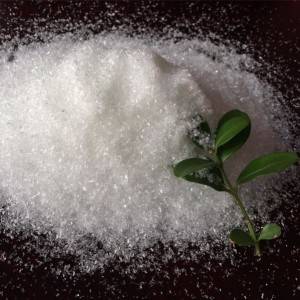
MONO POTASSIUM PHOSPHATE
MKP is a chemical with the chemical formula KH2PO4. Deliquescence. It melts into a transparent liquid when heated to 400°C, and solidifies into an opaque glassy potassium metaphosphate after cooling. Stable in the air, soluble in water, insoluble in ethanol. Industrially used as a buffer and culture agent; also used as a bacterial culture agent to synthesize a flavoring agent for sake, a raw material for making potassium metaphosphate, a culture agent, a strengthening agent, a leavening agent, and a fermentation aid for brewing yeast. In agriculture, it is used as a high-efficiency phosphate-potassium compound fertilizer. -

MANGANESE SULFATE
Manganese sulfate is a trace element required by crops that synthesize fatty acids. Therefore, manganese sulfate can be used as a fertilizer and applied to the soil to increase production. Adding manganese sulfate to animal feed has a fattening effect. Manganese sulfate is also a raw material and analytical reagent for the preparation of other manganese salts. Manganese sulfate is also used in industrial production such as electrolytic manganese, dyes, papermaking, and ceramics. [1] Due to deliquescent, the scope of application is limited. Manganese sulfate is non-flammable and irritating. Inhalation, ingestion or transdermal absorption is harmful and has a stimulating effect. Long-term inhalation of the product dust can cause chronic manganese poisoning. The early stage is mainly neurasthenia syndrome and neurological dysfunction, and the late stage tremor paralysis syndrome. It is harmful to the environment and can cause pollution to water bodies. In addition, manganese sulfate has various hydrates such as manganese sulfate monohydrate and manganese sulfate tetrahydrate.












